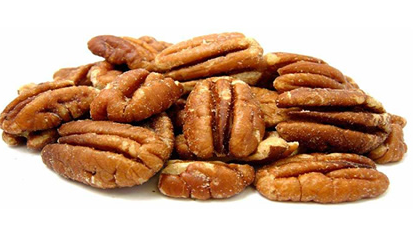 Did you know the fact that pecans do not originate from seed? There are certain attributes around these amazing nuts that make them unique. For an instance, the fact that every native pecan tree is markedly different from its seed parent is quite astonishing. Over last so many years, many researchers and enthusiasts have found more than 1000 types of pecan seedlings and marked their varieties too. These various types of pecans are named after a lot of things like name of the discoverer: Native tribes, or name of the person who planted it.
Did you know the fact that pecans do not originate from seed? There are certain attributes around these amazing nuts that make them unique. For an instance, the fact that every native pecan tree is markedly different from its seed parent is quite astonishing. Over last so many years, many researchers and enthusiasts have found more than 1000 types of pecan seedlings and marked their varieties too. These various types of pecans are named after a lot of things like name of the discoverer: Native tribes, or name of the person who planted it.
Although there is a huge variety of a pecan tree available today, there are just a few major contributors that help in most of the production. Some of the most popular names to mention here are: Desirable, Stuart, Cape Fear, Moreland and certain native seedling varieties. When it comes to distinguishing these various types of pecans, at the end of the day pecans are pecans as they all share some similarities but they differ in their sizes and definitely taste. Some varieties are bitterer than other. The thickness of the pecan shell also varies; some pecan have such thin shells that they can be broken by hand whereas some native and wild varieties have real thick shells. The pecans with thinner shells are referred as the improved variety and as sometimes tagged as paper shell pecans. But this is not always true as sometimes even native and wild cousins of these paper shell pecans provide ideal pecan nuts. However the thin shell variety is preferred because of the ease with which these can be cracked. Talking about size, it is observed that wild seedling nuts are smaller in size as compared with the other types.
Even after these variations and varied range of pecans available, it is not so easy to distinguish between different forms available. It is even more difficult to distinguish between the pecan trees than the nuts as nuts can be distinguished on the basis of their size, taste and shell types. Another point to bear in mind while talking about types of pecans is the area or region where these are cultivated. Few of the available types can be cultivated in different areas or regions of the same state. The above listed pecans are all grown in different areas depending upon the type of soil and climate that is favorable for their growth. Soil and climatic factors also contribute in defining the size and color of their nuts, can you believe this! Some of these trees are grown in cold regions up in the North whereas the temperate pecan species are planted in regions where the climate is normally warm and dry.
To conclude, temperature and climatic are the deciding factors what govern the type and production of pecans. The only difference in the various varieties available is the flavor of the nut and its size otherwise all these trees produce nuts no matter where they are cultivated and how they are grown. You can check out more information about pecans at Wikipedia.